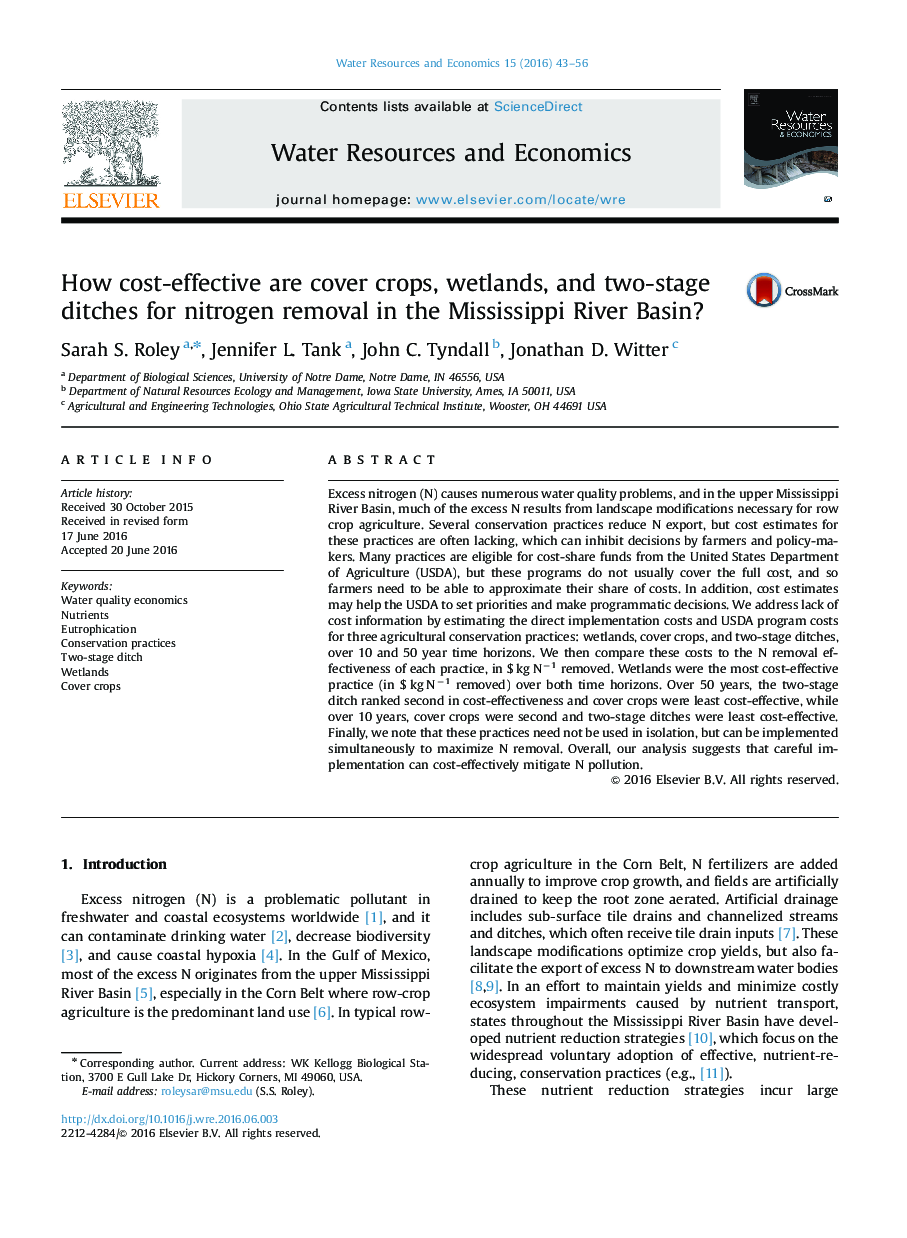| Article ID | Journal | Published Year | Pages | File Type |
|---|---|---|---|---|
| 988232 | Water Resources and Economics | 2016 | 14 Pages |
Excess nitrogen (N) causes numerous water quality problems, and in the upper Mississippi River Basin, much of the excess N results from landscape modifications necessary for row crop agriculture. Several conservation practices reduce N export, but cost estimates for these practices are often lacking, which can inhibit decisions by farmers and policy-makers. Many practices are eligible for cost-share funds from the United States Department of Agriculture (USDA), but these programs do not usually cover the full cost, and so farmers need to be able to approximate their share of costs. In addition, cost estimates may help the USDA to set priorities and make programmatic decisions. We address lack of cost information by estimating the direct implementation costs and USDA program costs for three agricultural conservation practices: wetlands, cover crops, and two-stage ditches, over 10 and 50 year time horizons. We then compare these costs to the N removal effectiveness of each practice, in $ kg N−1 removed. Wetlands were the most cost-effective practice (in $ kg N−1 removed) over both time horizons. Over 50 years, the two-stage ditch ranked second in cost-effectiveness and cover crops were least cost-effective, while over 10 years, cover crops were second and two-stage ditches were least cost-effective. Finally, we note that these practices need not be used in isolation, but can be implemented simultaneously to maximize N removal. Overall, our analysis suggests that careful implementation can cost-effectively mitigate N pollution.
Graphical abstractFigure optionsDownload full-size imageDownload as PowerPoint slide
